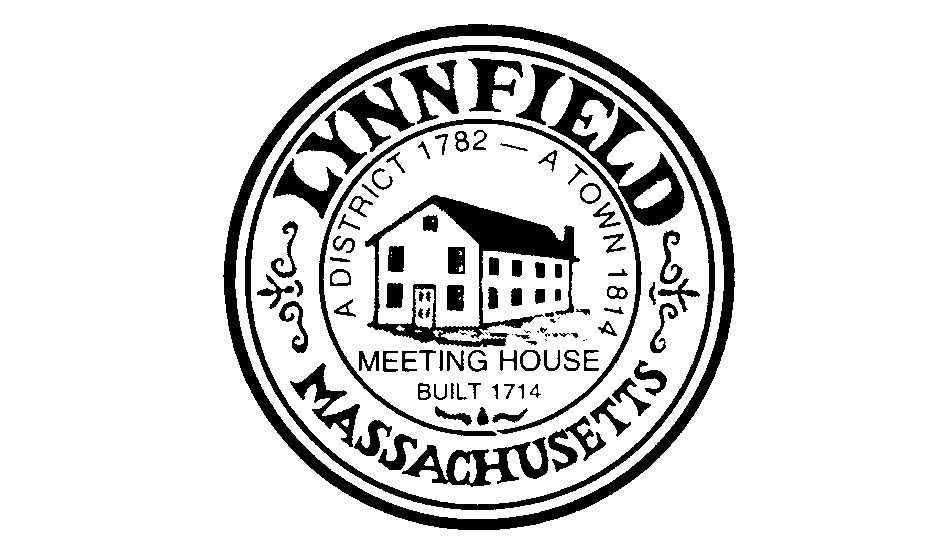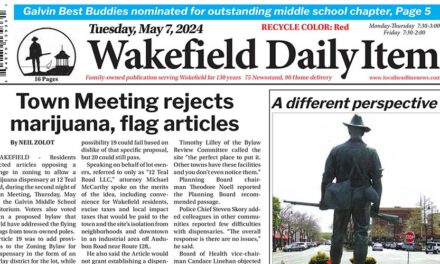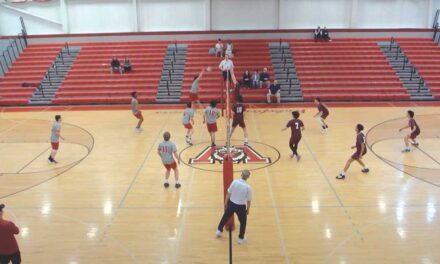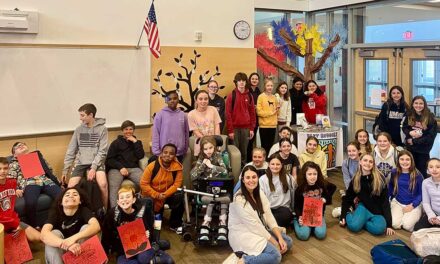By DAN TOMASELLO
LYNNFIELD — School officials are looking to address a number of concerns that were identified in the Youth Risk Behavior Survey.
After Jon Snow, Inc. Senior Consultant/Project Director Alec McKinney gave an overview of the survey’s results during the School Committee’s Feb. 1 meeting, Lynnfield High School Principal Bob Cleary and Lynnfield Middle School Assistant Principal Tom Sallee outlined what steps both schools will be taking in order to better support students’ needs.
Cleary said the survey’s results were troubling, but not surprising.
“The things we have been dealing with have been magnified by COVID,” said Cleary.
Sallee agreed.
“The results are very concerning to me, but they are not surprising,” said Sallee. “It’s been hard for kids.”
School Committee Vice Chairwoman Stacy Dahlstedt recalled that the survey revealed 50 percent of high school students reported feeling happy. She asked what school officials can do in order to increase student happiness.
“What else can we do to help kids feel engaged and connected?” asked Dahlstedt.
While Cleary said students are happy to be back in school full-time, he acknowledged students are not happy with the COVID restrictions that are still in place. He said students are longing for the days before the pandemic.
“Kids are back in school, but it’s not like it was before,” said Cleary. “The restrictions are beyond our control, and our kids have done a dynamite job dealing with the situation. It’s better than it was. It’s not just students. No one is happy with the situation.”
Cleary said the high school will be looking to get more students involved in different activities.
“We are not happy unless 100 percent of our students are happy,” said Cleary. “If we can find programs that engage students and get them involved, that will help.”
While High School Adjustment Counselor Kristen Dee said students were happy about returning to school full-time last year, she acknowledged it was “overwhelming” for a lot of students.
“We want students to feel connected, but it’s going to take some time,” said Dee.
School Committeeman Phil McQueen said he has seen similar trends at Lynn Classical High School.
“We are back, but it’s not the same,” said McQueen. “We are still in the middle of a pandemic even though some people think it is over. It’s not. Learning has also been accelerated because there was a lot of learning loss last year. That is going to increase levels of stress and bring down levels of happiness.”
Sallee said LMS officials and educators are concerned about student burnout.
“We had a lot of students come back with a lot of energy and wanted to do well, but the grind is now getting to them,” said Sallee. “We have kids who are struggling as we get into the deep part of winter, and they have had enough. We are now seeing new kids starting to struggle because they are running out of energy.”
In the wake of genderqueer students reporting they are suffering from depression and are being bullied at higher rates than their peers, the secondary schools will be looking to implement programs in order to better support the LBGTQ+ community.
Cleary said the high school will be working with the Department of Elementary and Secondary Education’s Safe Schools program in order to provide additional support for LGBTQ+ students.
“We know there are an awful lot of issues our genderqueer students are going through,” said Cleary. “We want to make sure we are including them and they feel valued. We don’t want our genderqueer students to feel ostracized.”
Sallee said the middle school established a Gay-Straight Alliance for the first time this year.
“We know that our genderqueer students are struggling the most,” said Sallee. “We had a number of our students banging on the counselors’ doors asking for a GSA at the beginning of the year, and they set it up. It has been a great resource for kids. We want all of our students to feel like they belong.”
In response to a question from School Committee member Kate DePrizio about students’ academic stress increasing, Sallee said the middle school is trying to find “a happy medium.”
“We know that if we push the kids too hard and there is too much homework, they are just going to crumble,” said Sallee. “We are trying to find that Goldilocks zone of how much we can push them and not break them.”
Dee and Middle School Adjustment Counselor Marisa Botta both said educators will let them know if they believe a student needs additional mental health support.
“Our teachers are on the frontlines and they do a lot of the screening for us,” said Botta.
Cleary said students who have reported depression or suicidal thoughts are often on educators’ radar.
“It’s important to have programs in place in case we missed someone,” said Cleary.
In response to a question from School Committee member Jamie Hayman, Botta said 85 percent of middle school students have an adult in their life they can talk to about different things. Cleary said high school students frequently discuss the different challenges they are experiencing with coaches, counselors and teachers.
Both schools are also trying to help students re-learn the routines and habits that were lost during the pandemic. Cleary said the high school’s upperclassmen had to teach freshmen how to clean up the cafeteria’s tables after eating lunch.
“Some of these kids are seventh-graders in ninth-graders’ bodies,” added Dee.
Sallee noted that sixth-grade educators had to spend time teaching students about bringing the right materials to class.
“Our students have missed a tremendous amount of habit-building and routine-building skills,” said Sallee. “We have been spending a lot of time focusing on what middle school looks like. I feel like we are starting to turn a corner now.”
Cleary said the secondary schools have both implemented the Signs of Suicide (SOS) program. He said both schools are also using the Screening, Brief Intervention and Referral to Treatment (SBIRT) program in order to help identify student substance use.
“The health education audit for grades K-12 will be looking at parts of the curriculum that we need to tweak,” said Cleary. “The Youth Risk Behavior Survey’s results will help us identify where we need to put our resources towards.”
The secondary schools are also hosting assemblies in order to raise awareness about healthy relationships, Internet safety, the dangers of underage drinking and the importance of safe driving.
Hayman recalled that school officials implemented a number of recommendations from past Youth Risk Behavior Surveys such as hiring adjustment counselors and increasing communication with outside providers. He also noted that the 2014 survey recommended that the Police Department add a school resource officer position.
“I want to thank all of the students for their honesty and transparency,” added Hayman.
School Committee Chairman Rich Sjoberg said he and his colleagues are committed to making sure all four schools have the resources they need in order to better support students.
“We are here to help you,” said Sjoberg. “I promise all of you we will continue to do that.”





